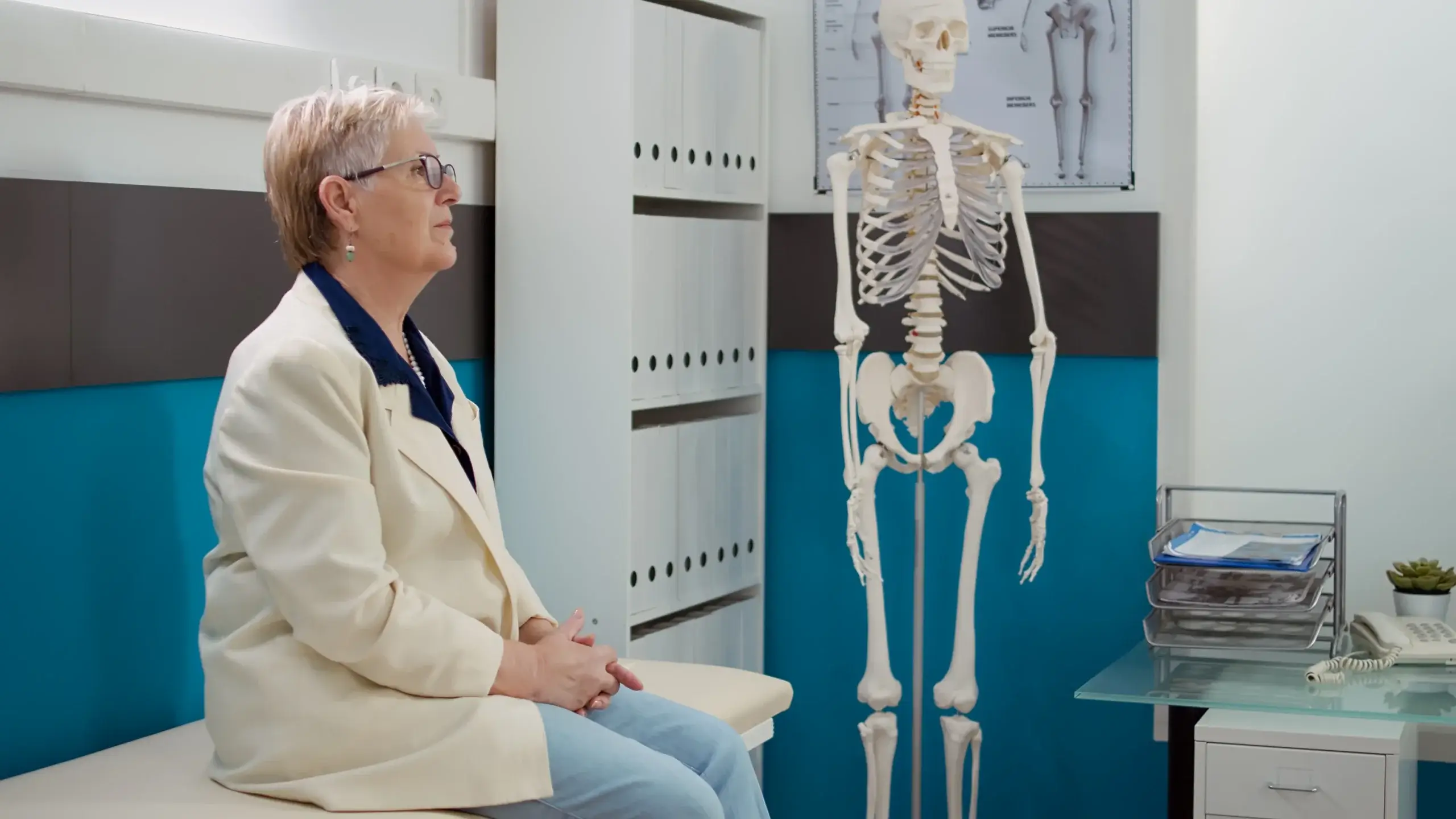
Bone Density Tests in Menopause: Why Early Screening Matters for Stronger Bones
Bone Density Tests in Menopause: Why Early Screening Matters for Stronger Bones
Embracing menopause often brings unexpected changes—one of the most crucial yet overlooked being your bone health. As estrogen levels dip, the delicate balance that maintains robust, resilient bones can shift, increasing the risk of osteoporosis and fractures. The good news? Modern bone density tests offer a proactive way to catch these changes early, giving you the power to fight back against bone loss before it becomes a significant issue. In this blog, we’ll reveal how these screenings work, explore the various test options available, and show you how taking control of your bone health today can lead to a stronger, more active tomorrow.
Understanding Bone Density & Its Importance
Bone density measures the amount of mineral matter present in a specific volume of bone. In simpler terms, it indicates the strength and durability of our bones. Healthy bones are naturally dense and resilient, providing the necessary structural support for our bodies. However, as women age—especially after entering menopause—bone density gradually declines, making bones more vulnerable to fractures and conditions like osteoporosis.
Why Does Bone Density Decrease in Menopause?
Several key factors contribute to the decline in bone density during menopause:
- Estrogen Deficiency:
Estrogen plays a vital role in regulating bone turnover by balancing bone resorption (the process of breaking down old bone) with bone formation. During menopause, estrogen levels drop significantly, which tilts this balance in favor of bone resorption. The increased bone breakdown without adequate new bone formation leads to a net loss in bone density. Regular bone density tests are crucial in detecting these early changes, allowing for timely intervention. - The Aging Process:
Aging naturally brings about changes in the body, including a reduction in bone mass. Over time, bones lose some of their mineral content and structural integrity, making them more susceptible to fractures even with minimal trauma. Bone density tests can help monitor this gradual decline, helping identify when preventive measures are needed. - Lifestyle Factors:
Several lifestyle choices can further exacerbate the loss of bone density. A poor diet low in essential nutrients such as calcium and vitamin D, a sedentary lifestyle lacking weight-bearing exercises, smoking, and excessive alcohol intake can all contribute to accelerated bone loss. Bone density tests can serve as a wake-up call, highlighting the impact of these factors and providing a baseline to measure improvements once lifestyle modifications are implemented.
The cumulative effect of estrogen deficiency, the natural aging process, and adverse lifestyle factors increases the risk of developing osteoporosis. This condition makes bones significantly more brittle and fragile, often leading to common fractures in the hip, spine, and wrist among postmenopausal women. Such fractures can not only be painful but may also result in long-term disability or a decrease in overall quality of life. By incorporating routine bone density tests into healthcare practices, early detection becomes possible, enabling timely and effective interventions to maintain bone strength and overall well-being.
The Link Between Menopause and Low Bone Density Symptoms
Menopause triggers a hormonal shift that accelerates bone loss. The decline in estrogen speeds up the thinning of bones, leading to a higher risk of fractures.
Common Symptoms of Low Bone Density in Menopausal Women:
- Back pain: Caused by weakened vertebrae or small fractures.
- Weaker grip strength: Due to reduced bone and muscle mass.
- Loss of height: A sign of vertebral fractures or compression.
- Fragile bones: Increased risk of fractures from minor falls or bumps.
- Poor posture: Often resulting in a stooped or hunched back (kyphosis).
Osteoporosis is often called a “silent disease” because there are no obvious symptoms until a fracture occurs. This is why bone density tests are crucial for early detection.
What Are Bone Density Tests?
Bone density tests (also called Bone Mineral Density or BMD tests) are diagnostic tools that assess the strength and mineral content of bones. These tests help determine the risk of osteoporosis and fractures.
Types of Bone Density Tests:
- Dual-Energy X-ray Absorptiometry (DEXA) Scan:
- The gold standard for measuring bone density.
- Uses low-dose X-rays to measure bone mineral content in the hip, spine, and wrist.
- Highly accurate and recommended for postmenopausal women.
- The gold standard for measuring bone density.
- Quantitative Computed Tomography (QCT):
- Uses CT scan technology to measure bone density.
- Provides detailed 3D images of bone structure.
- Less commonly used due to higher radiation exposure.
- Uses CT scan technology to measure bone density.
- Peripheral Bone Density Tests:
- Includes ultrasound and peripheral DEXA scans of the wrist, heel, or fingers.
- Used for initial screenings but not as comprehensive as central DEXA scans.
- Includes ultrasound and peripheral DEXA scans of the wrist, heel, or fingers.
Who Should Get a Bone Density Test?
Not all women need immediate screening, but certain factors increase the urgency for testing.
Recommended Age for Screening:
- Women aged 65 and older should get regular bone density tests.
- Postmenopausal women under 65 with risk factors should also be screened.
Risk Factors That Necessitate Testing:
- Family history of osteoporosis.
- Early menopause (before age 45).
- Previous fractures from minor injuries.
- Chronic illnesses like rheumatoid arthritis or thyroid disorders.
- Long-term use of corticosteroids or other bone-weakening medications.
- Smoking, excessive alcohol consumption, or a sedentary lifestyle.
If any of these risk factors apply, consult a doctor about early screening.
How to Prepare for a Bone Density Test
Bone density tests are non-invasive and painless. Proper preparation ensures accurate results.
Pre-Test Guidelines:
- Avoid calcium supplements 24 hours before the test.
- Wear loose, comfortable clothing without metal zippers, belts, or jewelry.
- Inform your doctor if you’ve had a barium X-ray or CT scan recently.
- Stay hydrated and follow your normal diet before the test.
The procedure typically takes 10-20 minutes, with results available within a few days.
Interpreting Bone Density Test Results
Bone density test results are reported as T-scores and Z-scores:
- T-Score:
- Above -1.0: Normal bone density.
- Between -1.0 and -2.5: Low bone mass (osteopenia).
- Below -2.5: Osteoporosis, indicating a high risk of fractures.
- Above -1.0: Normal bone density.
- Z-Score: Compares bone density with others of the same age and gender. A very low Z-score may indicate an underlying health condition.
If results show low bone density, a doctor may recommend lifestyle changes, medications, or follow-up tests.
Strengthening Bone Health After Testing
Once a bone density test reveals your bone health status, taking proactive steps to prevent further loss is key.
Key Lifestyle Changes for Stronger Bones
- Dietary Adjustments:
- Increase Calcium Intake: Aim for 1,200 mg per day. Good sources include dairy products, leafy greens, almonds, and fortified foods.
- Ensure Adequate Vitamin D: Get 600–800 IU daily from sunlight, fatty fish, and fortified foods.
- Incorporate Magnesium and Phosphorus: Support bone formation with foods like nuts, seeds, legumes, meat, and dairy.
- Increase Calcium Intake: Aim for 1,200 mg per day. Good sources include dairy products, leafy greens, almonds, and fortified foods.
- Exercise for Bone Strength:
- Weight-Bearing Exercises: Activities like walking, jogging, and stair climbing build bone mass.
- Strength Training: Lifting weights and resistance exercises strengthen bones and muscles.
- Balance & Flexibility Exercises: Yoga, Pilates, and Tai Chi improve coordination, posture, and fall prevention.
- Weight-Bearing Exercises: Activities like walking, jogging, and stair climbing build bone mass.
- Lifestyle Modifications:
- Quit Smoking & Limit Alcohol: Smoking and excessive alcohol weaken bones.
- Reduce Caffeine: High caffeine intake can interfere with calcium absorption.
- Maintain Healthy Body Weight: Both underweight and excess weight increase fracture risks.
- Quit Smoking & Limit Alcohol: Smoking and excessive alcohol weaken bones.
Medical Treatments & Supplements for Bone Health
For women diagnosed with osteopenia or osteoporosis, medical treatments may be necessary.
Common Medications:
- Bisphosphonates: Slow bone loss and improve density.
- Hormone Replacement Therapy (HRT): Helps maintain bone strength in postmenopausal women.
- Bone-Building Medications: Teriparatide and Denosumab may be prescribed for severe osteoporosis.
Essential Supplements:
- Calcium & Vitamin D: Essential for bone health.
- Collagen & Magnesium: Support bone matrix strength.
- Omega-3 Fatty Acids: Reduce inflammation and support bone preservation.
Preventive Care & Long-Term Strategies
Preventing bone loss is a lifelong commitment. Regular monitoring, lifestyle changes, and early interventions can help maintain strong bones and reduce fracture risks.
Key Preventive Measures:
- Annual Checkups & DEXA Scans: Women at risk should undergo DEXA scans every 2-3 years.
- Bone-Healthy Diet & Exercise: Ensure a diet rich in calcium, vitamin D, and magnesium, along with weight-bearing exercises.
- Lifestyle Adjustments: Avoid smoking, limit alcohol, and manage stress.
Bone health is essential, especially for menopausal women, as hormonal shifts accelerate bone loss. Bone density tests are vital for early detection, enabling timely interventions to prevent fractures. By making proactive lifestyle changes and consulting a doctor, women can maintain strong bones and overall well-being during menopause and beyond.
FAQs
Bone density tests are diagnostic procedures that measure the mineral content in your bones, helping determine their strength and assess the risk of osteoporosis.
While recommendations differ, many healthcare providers advise women with risk factors to undergo a bone density test within a few years after menopause to detect early bone loss.
Postmenopausal women are typically advised to have a bone density test every 2–3 years, but the exact frequency may vary based on individual risk factors.
Yes. By providing a T-score that reflects bone strength, these tests help estimate fracture risk, guiding proactive measures to prevent breaks.
Many insurance providers cover bone density tests, particularly for women over 65 or those with specific risk factors. It’s best to check with your insurer for details.

Sonakshi Kandhari





